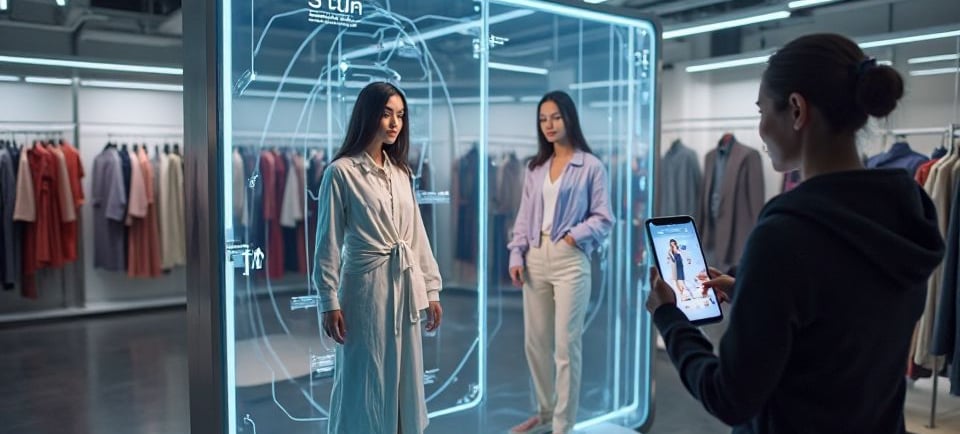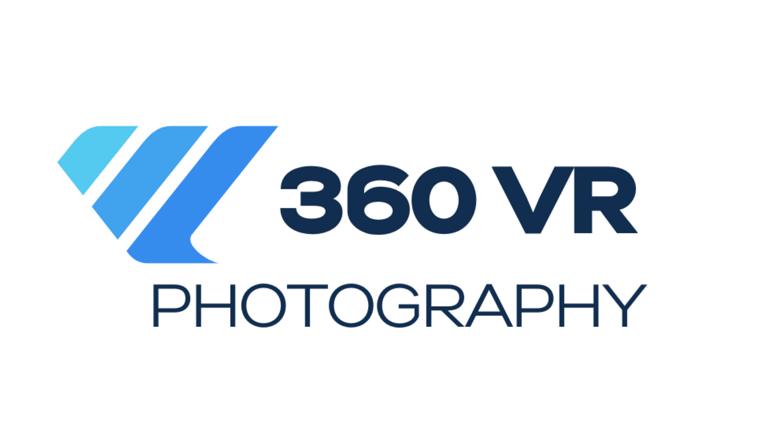AI in Fashion: How Virtual Try-On Technology is Transforming Shopping
Discover how AI-powered virtual try-on technology is revolutionizing fashion. Learn how AI enhances personalization, reduces returns, and boosts customer confidence.
Viral Gala
10/4/20253 min read


🛍️ Fit-First Future: AI in Fashion and the Rise of Virtual Try-On Technology
The fashion industry is undergoing a relentless digital revolution, and Artificial Intelligence (AI) is the engine driving it. At the forefront of this shift is AI-powered virtual try-on technology (VTO), a game-changer that allows customers to see precisely how clothes, shoes, or accessories look on them before committing to a purchase—whether online, on social media, or in physical stores [Source 3.3].
By skillfully combining sophisticated AI algorithms, precise body scanning, and seamless augmented reality (AR), fashion brands are making shopping smarter, faster, and more personalized than ever before.
Understanding AI Virtual Try-On Technology
This isn't just a simple filter; it’s a sophisticated system. AI virtual try-on technology leverages:
Machine Learning (ML) & Computer Vision: To accurately recognize and map a shopper’s body shape, posture, or facial structure [Source 2.1, 3.1].
Augmented Reality (AR): To perfectly overlay the digital fashion item onto the live image of the shopper in real time, creating a realistic, interactive visual [Source 3.3, 3.4].
Personalization: AI predicts and suggests the perfect size, fit, and style, elevating the experience beyond basic AR [Source 3.5].
The Unbeatable Edge: Benefits of AI in Fashion Retail
Implementing AI-driven virtual try-on offers immediate, tangible returns for both the consumer and the brand:
Accurate Size & Fit Prediction: AI-powered body scanning ensures shoppers get the right size instantly, eliminating the guesswork that plagues online shopping [Source 1.3].
Reduced Return Rates: Because buyers can visually confirm the fit and style before the purchase is finalized, return rates drop significantly—often by 20–40% [Source 1.3, 1.5]—saving retailers massive logistical costs.
Personalized Recommendations: AI analyzes past purchase data and current session behavior to suggest complementary outfits, colors, or styles tailored to the individual’s preferences [Source 4.2, 4.4].
Seamless E-Commerce: AI try-ons make online shopping interactive, injecting the confidence needed for customers to purchase higher-value items digitally [Source 1.1].
Smarter In-Store Experience: Futuristic smart mirrors with AI technology allow shoppers to change and try on dozens of outfits virtually without entering a changing room, dramatically improving in-store efficiency [Source 3.4].
Real-World Leaders in AI Virtual Try-On
Major brands are already proving the ROI of this technology:
H&M: Uses AI to suggest intelligent outfit combinations and virtual styling, improving average order value [Source 4.3].
Nike: Deployed AI foot scanning (Nike Fit) to ensure customers select the perfect shoe size and fit, reducing costly returns [Source 2.1].
L’Oréal: Leads the way with AI-driven AR makeup try-on (Modiface), allowing seamless, realistic testing across mobile apps and social platforms [Source 2.1, 2.3].
Gucci: Offers AI-powered sneaker and eyewear try-on for their app users, merging luxury with digital accessibility [Source 2.4].
Warby Parker: A pioneer in AR try-on for eyewear, using computer vision to analyze face shape for a personalized fit [Source 2.2].
🚀 Conclusion & The Future of Fashion
AI in fashion is redefining the way people shop. With virtual try-on technology, the gap between physical and digital retail is rapidly closing. Shoppers gain confidence and personalization, while brands enjoy higher sales and fewer returns. The future of fashion isn't just about fabric—it's about intelligence powered by AI.
By 2030, AI-driven try-on will integrate deeply into the Metaverse, where shoppers will attend virtual fashion shows and instantly try digital clothes on their avatars or themselves [Source 3.5].
As specialists in 3D and 360° content at 360 VR Photography, we understand that sophisticated visualization is the crucial first step for any AI/AR system.
Is your brand ready for the future of virtual retail?
Contact Viral Gala at 360 VR Photography: 9920322366
Explore Our Solutions: 360vrphotography.com or 360vrphotography.in
🔗 References & Further Reading
[Source 1.1] Virtual Try-On Technology: Boost B2B Sales & Reduce Returns - Shaku: https://shaku.tech/blogs/virtual-try-ons-the-key-to-reducing-returns-and-increasing-customer-satisfaction
[Source 1.3] Reducing Returns and Increasing Satisfaction: AI in Product Fitting and Sizing: https://www.researchgate.net/publication/394102054_Reducing_Returns_and_Increasing_Satisfaction_AI_in_Product_Fitting_and_Sizing
[Source 1.5] How Virtual Try-On Technology Can Cut Online Returns by 30%: Complete Guide - Fytted: https://fytted.com/blog/virtual-try-on-reduce-returns
[Source 2.1] 9 Examples on How Retail Can Use Virtual Try-On Technology - artlabs: https://artlabs.ai/blog/9-examples-on-how-retail-can-use-virtual-try-on
[Source 2.2] Top 6 Virtual Try-On Examples Which Enhance Personal Shopping Experience - Netguru: https://www.netguru.com/blog/virtual-try-on-examples
[Source 2.3] How AI-Powered Virtual Try-On Is Disrupting Retail Market - iPhygital: https://blog.iphygital.ai/how-ai-powered-virtual-try-on-is-disrupting-retail-market/
[Source 2.4] Virtual Try-On Technology in Retail: Implementation Guide & Examples - FFFACE.ME: https://ffface.me/media/virtual-try-on-technology-in-retail/
[Source 3.1] Virtual Try-On Technology Guide: Develop Your Own Try On App - MobiDev: https://mobidev.biz/blog/augmented-reality-virtual-try-on-technology-for-ecommerce
[Source 3.3] Top 5 AI Virtual Try-On Tools in 2025 (Clothes, Shoes & More) - Perfect Corp.: https://www.perfectcorp.com/business/blog/generative-AI/ai-virtual-try-on-tools
[Source 3.4] Augmented Reality in Fashion: Transforming Retail with AR Mirrors and Virtual Try-Ons: https://www.brandxr.io/augmented-reality-in-fashion-transforming-retail-with-ar-mirrors-and-virtual-try-ons
[Source 3.5] The Role of AI and AR in Making Virtual Try-On More Realistic Than Ever: https://mirrar.in/blog/the-role-of-ai-and-ar-in-making-virtual-try-on-more-realistic-than-ever
[Source 4.2] How AI-Powered Virtual Stylists Are Redefining Personal Shopping Experiences: https://www.ailusion.in/blog/how-ai-powered-virtual-stylists-are-redefining-personal-shopping-experiences-1740462767942
[Source 4.3] Does Virtual Try-On Technology Actually Work for Fashion? - Fashionista: https://fashionista.com/2023/10/virtual-try-on-apps-technology-clothing-accessories
[Source 4.4] AI Fashion Assistants: The Next Steps in Virtual Try-On - MirrAR: https://mirrar.in/blog/from-ar-filters-to-ai-fashion-assistants-the-next-steps-in-virtual-try-on-technology/

Experience
Engaging virtual tours for real estate and events.
Innovative
info@360vrphotography.in
+91 9920322366
